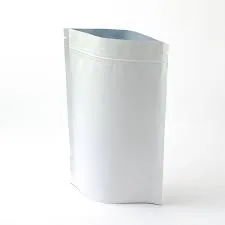- Afrikaans
- Albanian
- Amharic
- Arabic
- Armenian
- Azerbaijani
- Basque
- Belarusian
- Bengali
- Bosnian
- Bulgarian
- Catalan
- Cebuano
- chinese_simplified
- chinese_traditional
- Corsican
- Croatian
- Czech
- Danish
- Dutch
- English
- Esperanto
- Estonian
- Finnish
- French
- Frisian
- Galician
- Georgian
- German
- Greek
- Gujarati
- haitian_creole
- hausa
- hawaiian
- Hebrew
- Hindi
- Miao
- Hungarian
- Icelandic
- igbo
- Indonesian
- irish
- Italian
- Japanese
- Javanese
- Kannada
- kazakh
- Khmer
- Rwandese
- Korean
- Kurdish
- Kyrgyz
- Lao
- Latin
- Latvian
- Lithuanian
- Luxembourgish
- Macedonian
- Malgashi
- Malay
- Malayalam
- Maltese
- Maori
- Marathi
- Mongolian
- Myanmar
- Nepali
- Norwegian
- Norwegian
- Occitan
- Pashto
- Persian
- Polish
- Portuguese
- Punjabi
- Romanian
- Russian
- Samoan
- scottish-gaelic
- Serbian
- Sesotho
- Shona
- Sindhi
- Sinhala
- Slovak
- Slovenian
- Somali
- Spanish
- Sundanese
- Swahili
- Swedish
- Tagalog
- Tajik
- Tamil
- Tatar
- Telugu
- Thai
- Turkish
- Turkmen
- Ukrainian
- Urdu
- Uighur
- Uzbek
- Vietnamese
- Welsh
- Bantu
- Yiddish
- Yoruba
- Zulu
sealing mylar
Sealing Mylar A Comprehensive Guide
Mylar, a type of polyester film, is known for its versatility and resilience in various applications. Originally developed by DuPont in the 1950s, Mylar has emerged as a favored material in industries ranging from packaging to electronics. One of the most significant functionalities of Mylar is its ability to be sealed, creating an airtight barrier that protects contents from moisture, gases, and external contaminants. This article delves into the sealing characteristics of Mylar, the methods employed, and its myriad applications.
What is Mylar?
Mylar is a registered trademark for a type of biaxially oriented polyethylene terephthalate (BoPET) film. Its unique properties include high tensile strength, excellent electrical insulation, and resistance to moisture and chemicals. Mylar can also be manufactured in various thicknesses and finishes, making it suitable for a wide range of applications—from food storage to electrical insulation.
The Importance of Sealing Mylar
Sealing Mylar is essential for several reasons
1. Preservation of Contents In food packaging, sealing helps to keep the contents fresh by preventing the ingress of oxygen and moisture. This is crucial for items like grains, dried fruits, and snacks that can spoil quickly.
2. Protection from Contaminants Sealed Mylar is impermeable to light and various chemicals, offering protection to sensitive items such as electronics and pharmaceuticals.
3. Extended Shelf Life For both food and non-food products, sealing in Mylar can significantly extend shelf life. The barrier properties of Mylar reduce oxidation and other deterioration processes that can lead to spoilage.
4. Cost-Effectiveness Mylar is lightweight and durable, reducing shipping costs for packaged goods. Its sealing capabilities mean fewer resources are spent on preservatives and other methods of prolonging shelf life.
Methods of Sealing Mylar
Several methods can be employed for sealing Mylar, each with its advantages and applications
sealing mylar

1. Heat Sealing This is the most common method, where heat is applied to the edges of the Mylar to melt the material slightly, allowing the two surfaces to bond together. Heat sealing machines are available in various sizes, from small handheld devices to large industrial machines capable of sealing bulk items quickly.
2. Cold Sealing Unlike heat sealing, cold sealing utilizes adhesives that activate under pressure rather than temperature. This method is particularly useful for sensitive materials that cannot withstand high heat.
3. Ultrasonic Sealing This advanced sealing technique uses high-frequency ultrasonic waves to generate heat at the interface of the Mylar layers, effectively bonding them without the need for external heat sources. Ultrasonic sealing is favored for its speed and efficiency in high-volume applications.
4. Sewing Though less common, Mylar can also be sewn together. This is utilized in applications such as space blankets, where lightweight and flexibility are crucial qualities.
Applications of Sealed Mylar
The applications of sealed Mylar are vast and varied
- Food Packaging Vacuum-sealed Mylar bags are frequently used to package dried goods, snacks, and even vacuum-sealed meals. The airtight seal protects against spoilage and maintains flavor and texture.
- Electronics Mylar is used in packaging electronic components, ensuring they remain free from moisture and dust, which can cause failures.
- Medical Supplies Sterilized medical instruments and pharmaceuticals often utilize Mylar seals to maintain sterility and integrity during storage and transport.
- Arts and Crafts Many crafters use Mylar sheets for their durability and customizable nature. Sealed Mylar can also be employed in the production of balloons and decorative items.
Conclusion
Sealing Mylar is an essential process that significantly enhances the usability and longevity of products across various industries. Its unique properties make it an ideal choice for applications where preservation, protection, and cost-effectiveness are paramount. Understanding the methods of sealing Mylar and its wide-ranging applications can lead to informed decisions in both industrial and everyday contexts, reinforcing its value as a vital material in modern society. Whether you are storing food, protecting sensitive electronics, or engaging in creative projects, sealed Mylar is bound to play a beneficial role.













